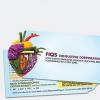We're scratching our heads in the lab regarding the HACCP decision tree process.
we have our process steps and hazards down, now we're trying to apply the decision tree to determine if it's a CCP or not.
We don't know how or why this would be a CCP?
Process Step: Material Offloading and Inspection from Delivery
Hazard: Contamination of Pallet Wood "PRP 10: Raw Materials (Supplier selection, Specification)", "PRP 10: Raw Materials (Supplier selection, Specification)"
Control Measure: Disinfection of Wood Pallets and Decanting of Materials from Wood Pallet onto Aluminium Pallets
Control Measure Justification: Disinfection of Wood Pallets and Decanting of Materials from Wood Pallet onto Aluminium Pallets
---
By disinfecting the wood pallets and decanting our product, the hazard would be eliminated, so would this mean that in Q3, that the hazard would be fully eliminated and hence not a CCP? Based on Q3 the identified hazard could not increase due to disinfection, however there is a control measure in place, so we seem to be stuck?
If we have our PRP in place for disinfection with an SOP, then we don't need to run this hazard through a CCP decision tree correct?
Edited by ArnieTheTerminator, 06 May 2022 - 12:46 PM.















